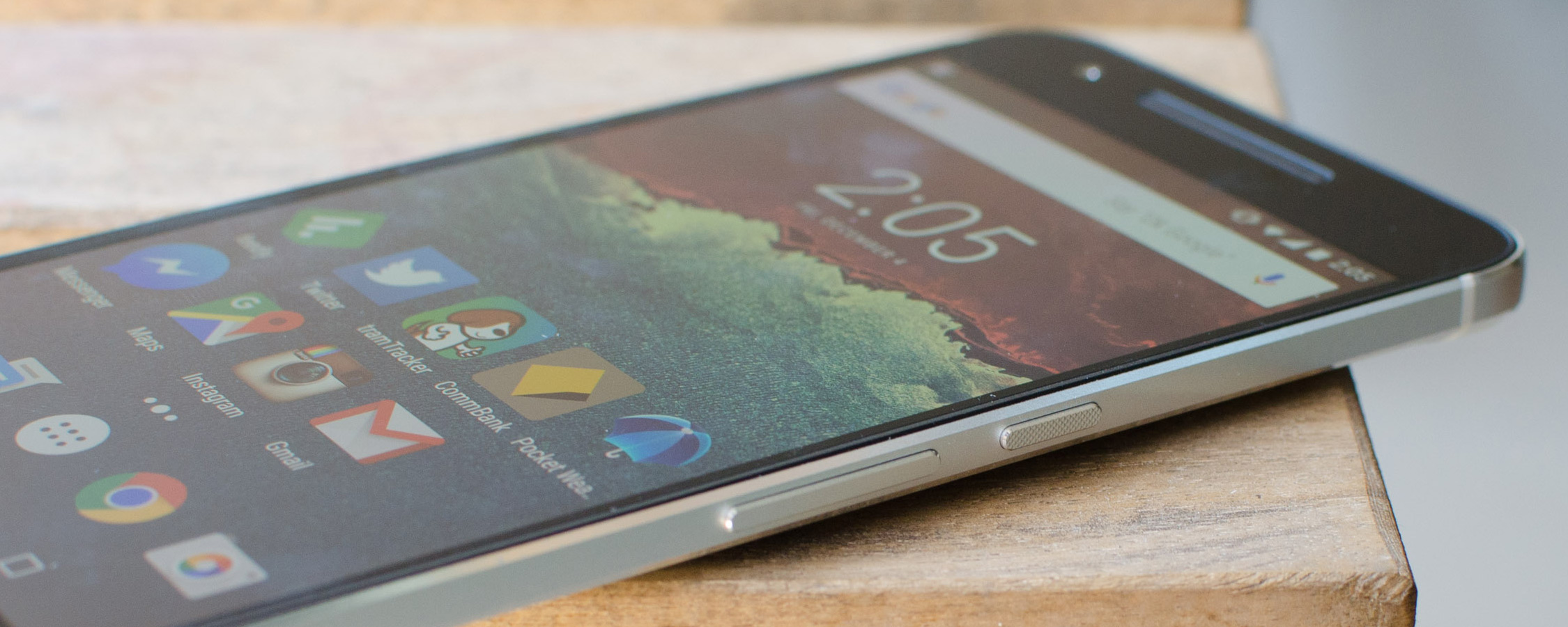Display
The Nexus 6P comes with a 5.7-inch AMOLED display with a resolution of 2560 x 1440, resulting in a pixel density of 518 ppi. This is the same panel type and resolution as the Nexus 6's display, although it's slightly denser due to the size downgrade from 6.0 inches. As the display uses AMOLED technology, we're also looking at a PenTile subpixel matrix, although it's not noticeable due to the density of the display.
In what shouldn't be a surprise, the 1440p Nexus 6P display delivers extremely sharp images and text. The difference between this resolution and a similar 1080p panel isn't significant, but a keen eye will be able to spot the upgrade in font clarity in particular. I'm still not convinced that the upgrade in resolution and sharpness is worth the downgrade in brightness, performance and battery life, but 1440p displays have certainly been improving over the past year and a half, and the Nexus 6P's display is undoubtedly crisp.
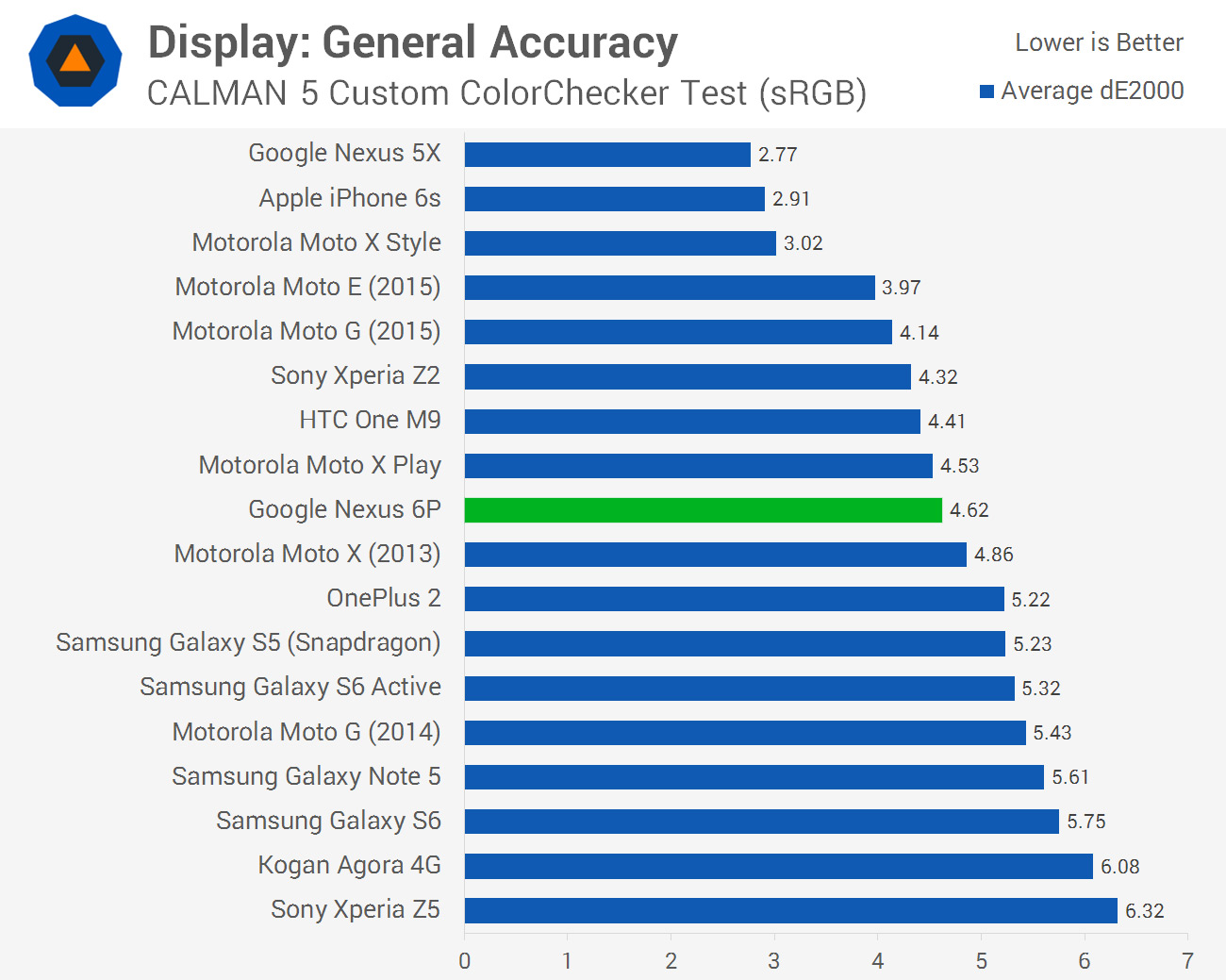
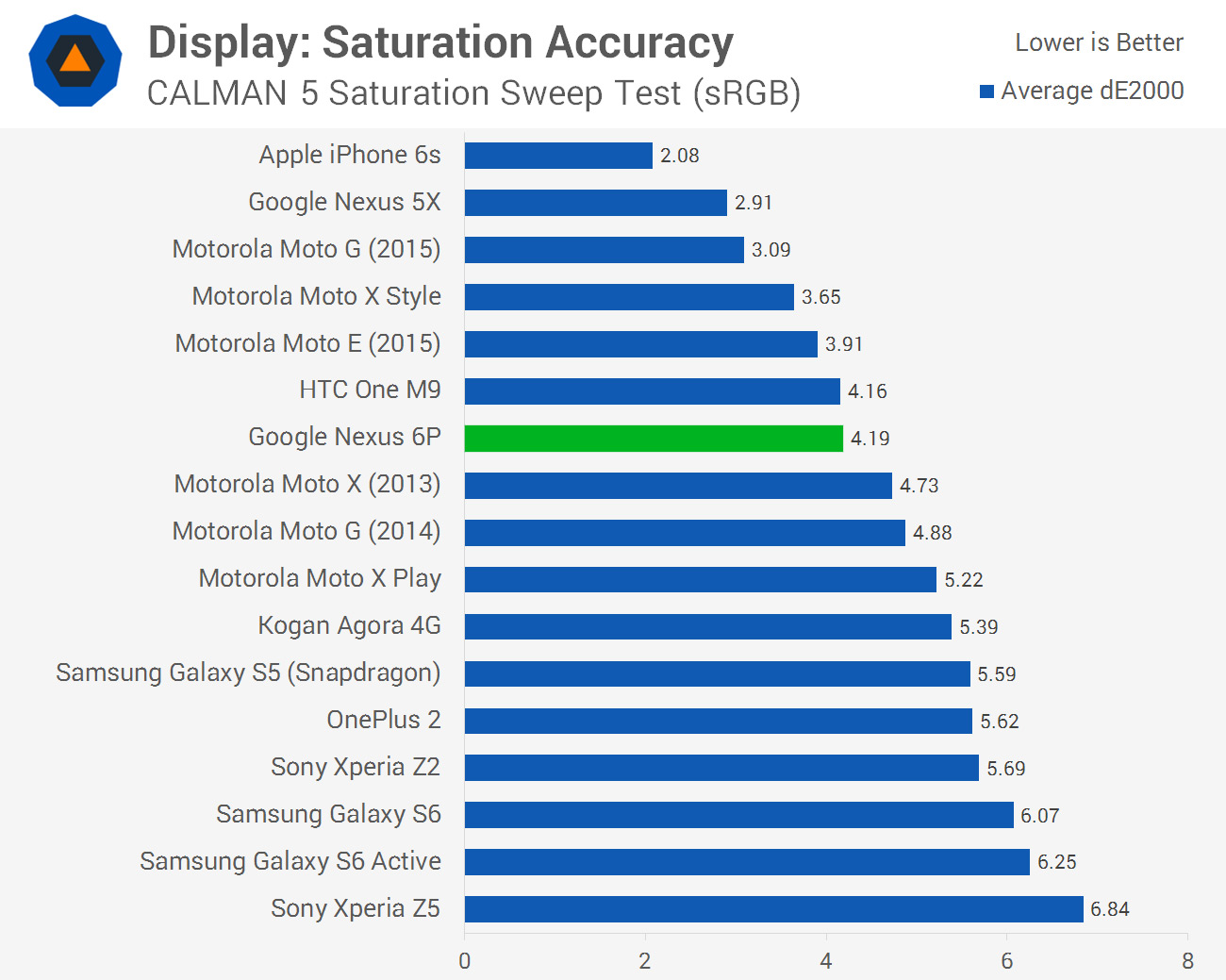

As for display quality, the 6P's AMOLED panel is one of the best in terms of accuracy at its default settings, easily beating the oversaturated Galaxy S6 and Galaxy Note 5. However that's not to say results are good: the Nexus 6P is still oversaturated by a decent amount, and it falls comfortably behind the best LCD panels out there, including the iPhone 6s, Nexus 5X, and Moto X Style. Some people may prefer the oversaturated look of the 6P's panel, though ideally we'd be seeing something more accurate.
The good news is that display temperature comes close to the ideal 6500K mark, which means we're not getting a typical AMOLED blue tint. Contrast is also excellent, due to the nature of AMOLED panels, as are viewing angles and black levels.
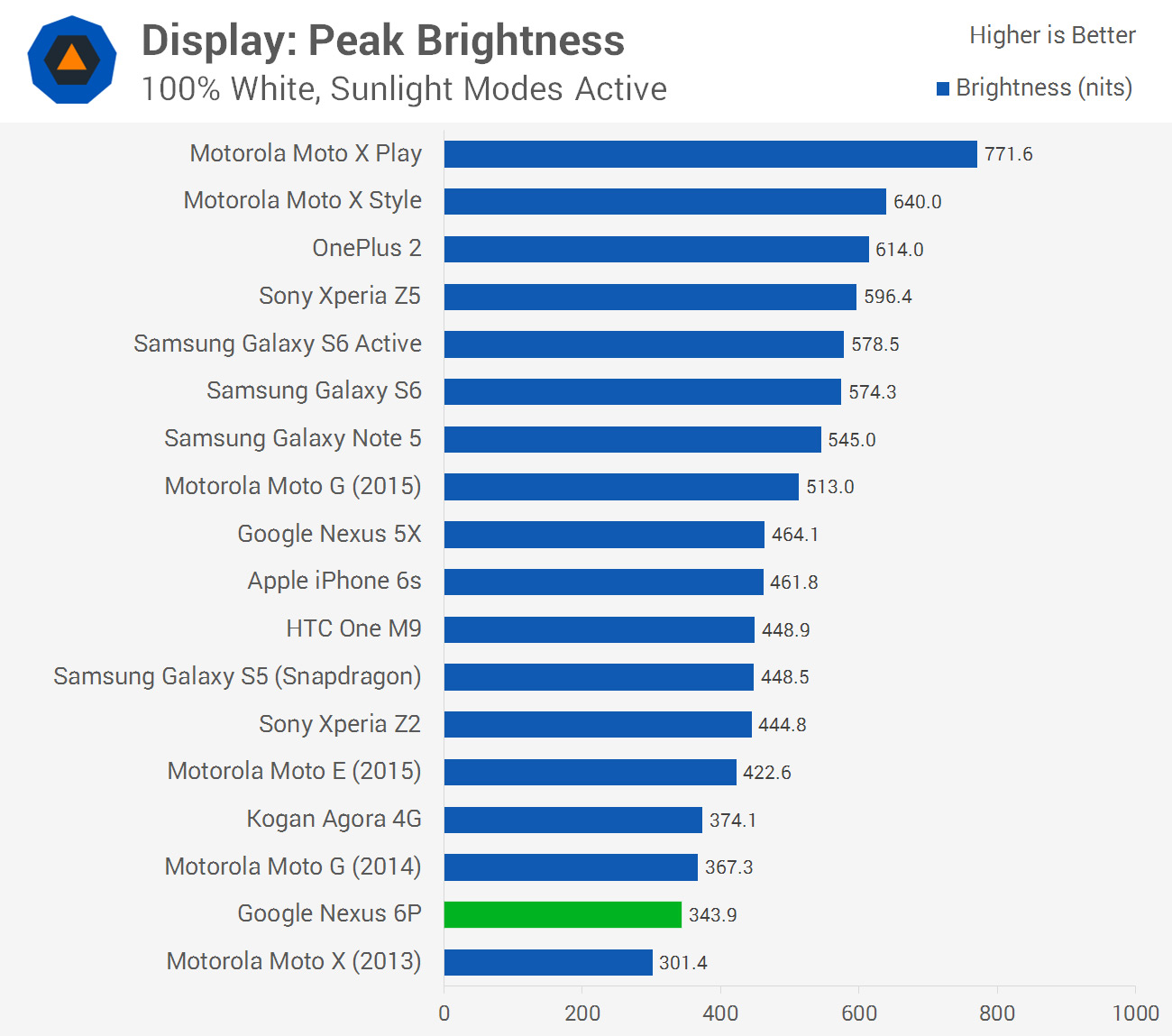
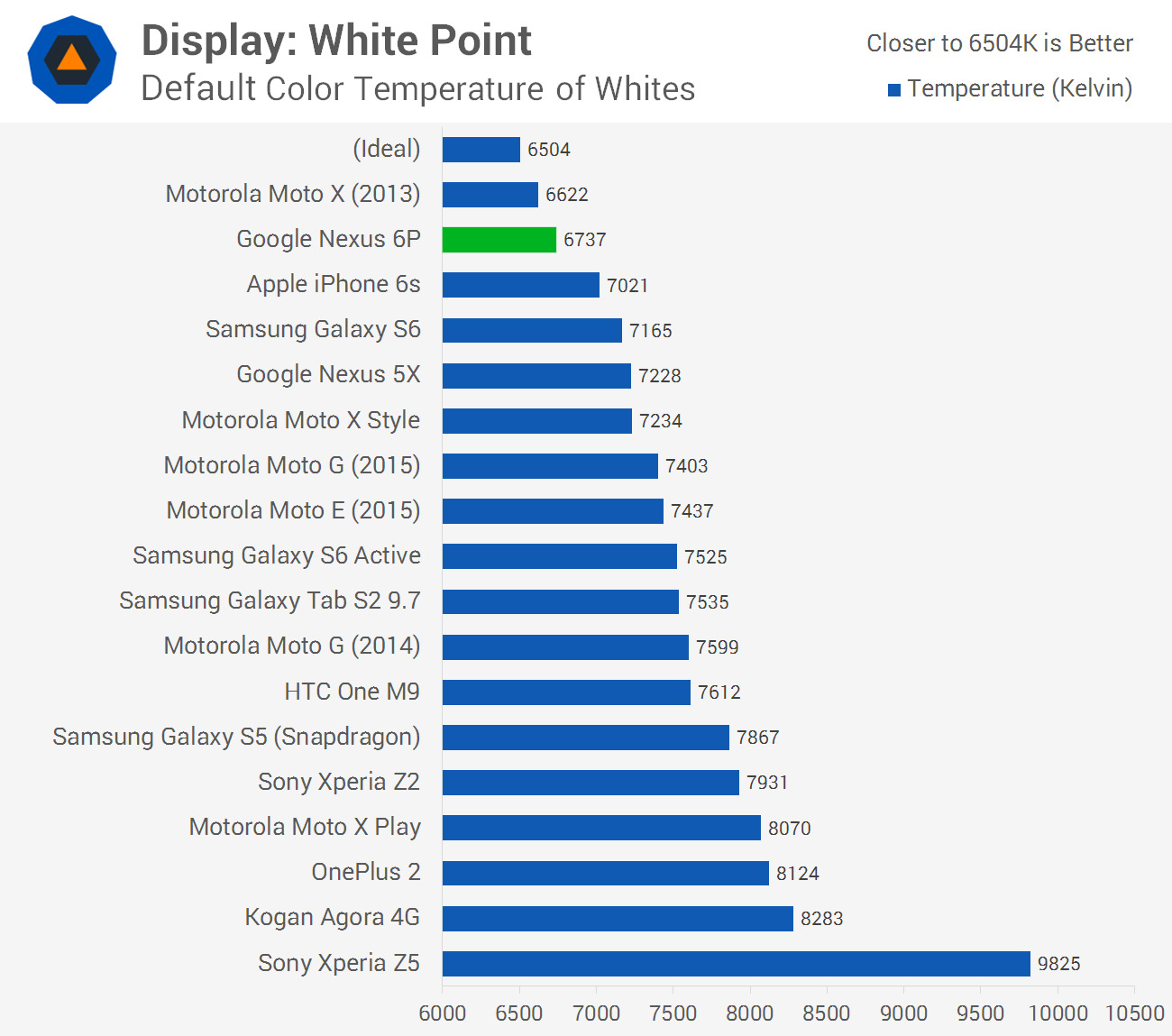
Unfortunately the 6P doesn't put up a very good fight when it comes to display brightness. The AMOLED panel, when displaying a full white image, falls well behind the competition, which can make it difficult to view text in bright sunlight. The good news is that the way AMOLED panels work means that brightness in most situations will be higher than what's reported here, though don't expect it to dethrone the Nexus 5X or other smartphones with more powerful LCDs.
I also found that the automatic brightness feature on the Nexus 6P wasn't particularly effective, and I often overrode whatever it set manually. The most common issue I faced was that the display was way too bright when viewing under artificial lights at night, so clearly some tweaking is needed here.
Interestingly, the Nexus 6P comes with a hidden 'sRGB' display mode that can be switched on in the developer settings. Google claims this mode is better calibrated to sRGB standards, which is true, but it's not what I'd describe as 'sRGB accurate'. This mode actually undersaturates the display by a decent margin, which makes images look pretty dull, and although accuracy is closer to Nexus 5X/iPhone 6s levels, I wouldn't recommend switching the mode on for regular use.
